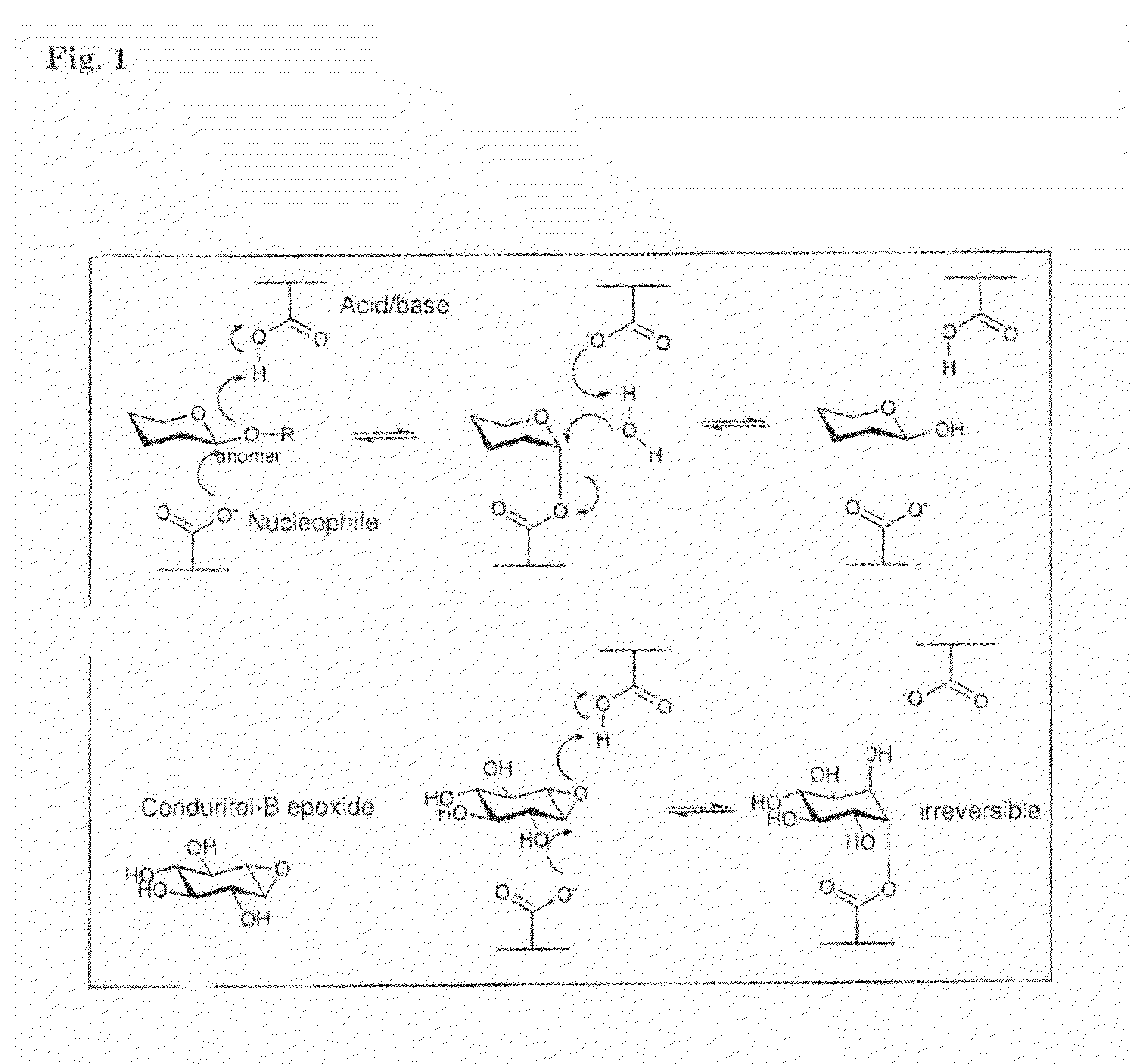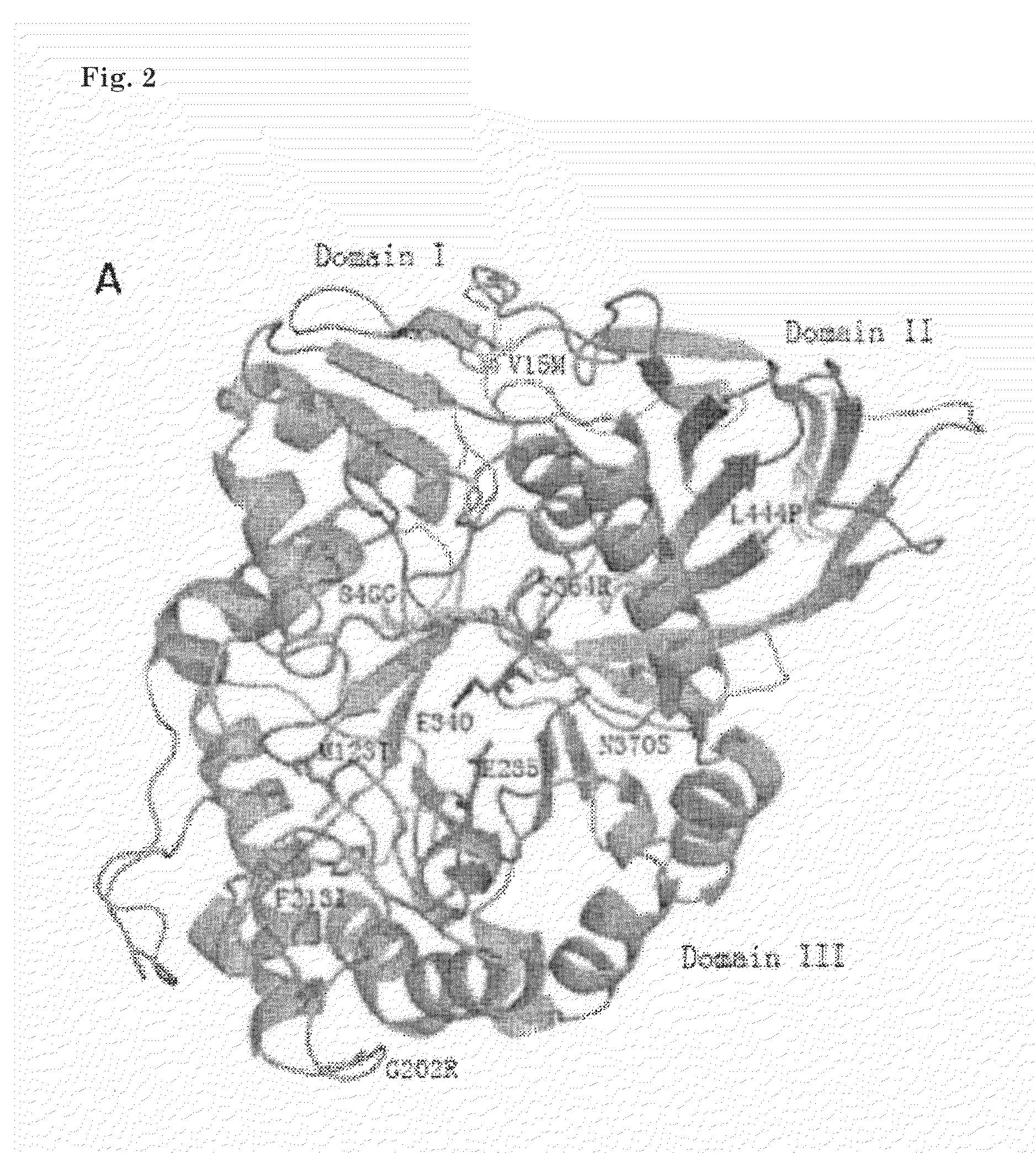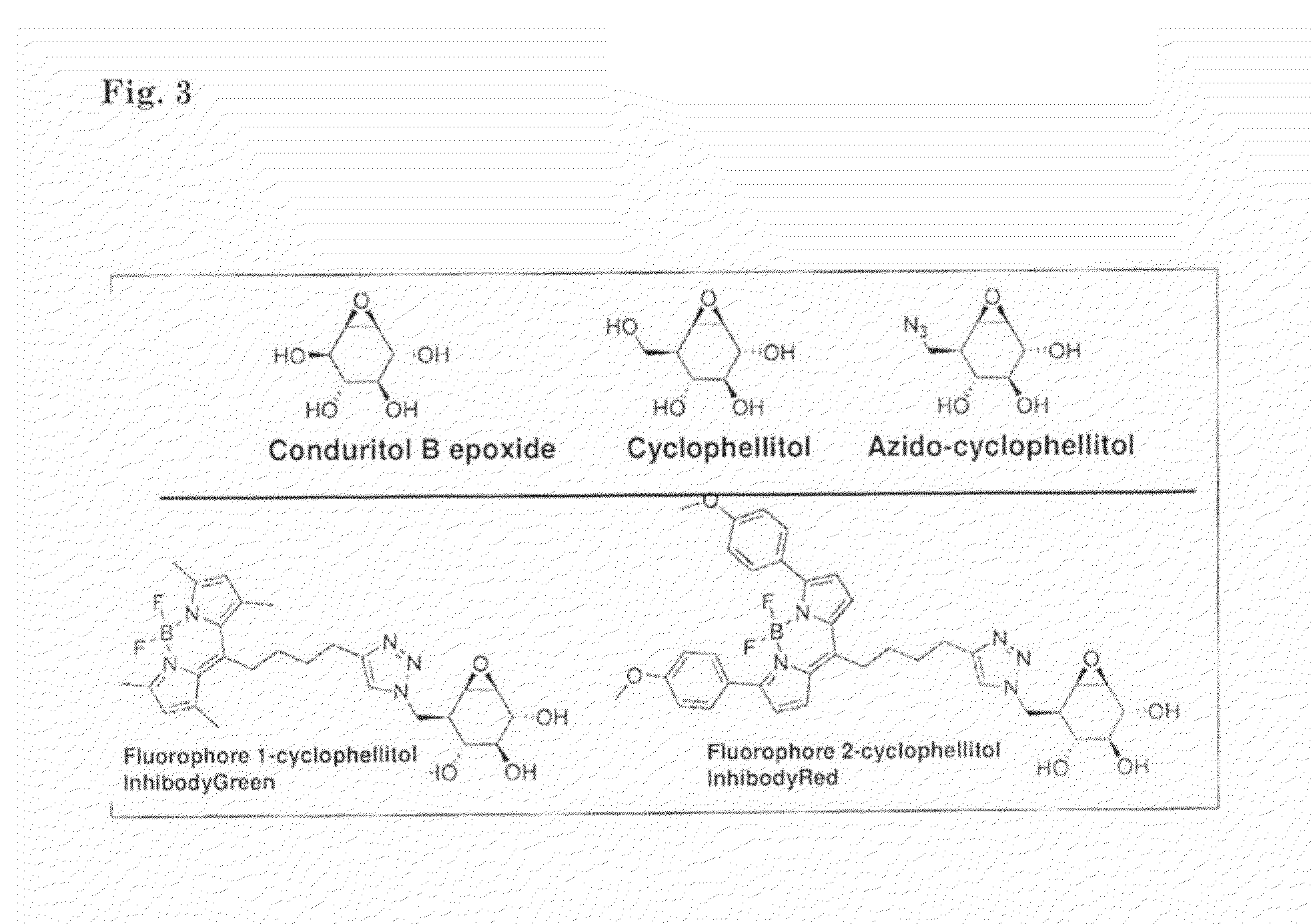ACTIVITY BASED PROBES (ABPs) INTERACTING WITH GLYCOSIDASES
a glycosidases and activity-based probe technology, applied in the field of activity-based protein profiling, can solve the problems of sudden weight loss, enzyme therapy does not prevent neurological manifestations, and high cos
- Summary
- Abstract
- Description
- Claims
- Application Information
AI Technical Summary
Benefits of technology
Problems solved by technology
Method used
Image
Examples
example 1
Synthesis of Azido-Cyclophellitol
[0131]For producing azido-cyclophellitol connected to a fluorophore or biotine, the epoxide of cyclophellitol (2) is protonated in the active site by a carboxylic residue. Subsequent ring-opening by the nucleophilic residue in catalytic side results in an inhibitor-enzyme. In contrast to the fluorinated glycosides, the glycosyl epoxides (2 and 3 in scheme 1) lack an endo-cyclic oxygen and therefore form highly stable adducts making them good leads for ABPs. Based on the glucosidase inhibitor cyclophellitol (2) and its synthetic diastereomer epi-cyclophellitol (4), a new set of activity based probes was designed, which are applied as glucosidase labels. Modification of the C6-position of cyclophellitol (2) and epi-cyclophellitol (4) with an azide allows visualization of inhibitor-enzyme adducts by Staudinger-Bertozzi ligation or Cu'-catalyzed click reaction. To this end, azido-cyclophellitol (5) and azido-epicyclophellitol (6) were synthesized as depi...
example 2
[0133]Deficiency of glucocerebrosidase (GBA) underlies Gaucher disease, a common lysosomal storage disorder. Carriership for Gaucher disease has recently been identified as major risk for parkinsonism. Presently, no method exists to visualize active GBA molecules in situ. We here report the design, synthesis and application of two fluorescent activity-based probes allowing highly specific labeling of active GBA molecules in vitro and in cultured cells and mice in vivo. Detection of in vitro labeled recombinant GBA on slab gels after electrophoresis is in the low attomolar range. Using cell or tissue lysates, we obtained exclusive labeling of GBA molecules. We present evidence from fluorescence-activated cell sorting analysis, fluorescence microscopy and pulse-chase experiments of highly efficient labeling of GBA molecules in intact cells as well as tissues of mice. In addition, we illustrate the use of the fluorescent probes to study inhibitors and tentative chaperones in living cel...
example 3
[0202]Compounds are referred to herein below by their chemical name, an arbitrary name and / or by an arbitrary number. The chemical structures that are associated with these names and number are depicted in FIG. 22.
Results
Synthesis of the Probes
[0203]KY170 4, and fluorescent probes MDW933 5 and MDW941 6 were synthesized as follows (See also FIG. 38, scheme 1). First, core carbocycle 10 was synthesized in 7 steps from D-xylose as described (1). Selective tosylation of the primary alcohol in 1 by treatment with p-toluenesulfonyl chloride in CH2Cl2 followed by substitution of the tosylate with sodium azide afforded azido alcohol 11 in 72%. The benzyl groups in 11 were removed under the agency of BC13 prior to epoxidation. The resulting free hydroxyls were protected as the corresponding benzoyl protective groups using benzoyl chloride in pyridine. Epoxidation of cyclohexene 12 using in situ formed methyl(trifluoromethyl)dioxirane gave epoxides 13 and 14 as a separable mixture. Deprotecti...
PUM
| Property | Measurement | Unit |
|---|---|---|
| Molar density | aaaaa | aaaaa |
| Molar density | aaaaa | aaaaa |
| Molar density | aaaaa | aaaaa |
Abstract
Description
Claims
Application Information
 Login to View More
Login to View More - R&D
- Intellectual Property
- Life Sciences
- Materials
- Tech Scout
- Unparalleled Data Quality
- Higher Quality Content
- 60% Fewer Hallucinations
Browse by: Latest US Patents, China's latest patents, Technical Efficacy Thesaurus, Application Domain, Technology Topic, Popular Technical Reports.
© 2025 PatSnap. All rights reserved.Legal|Privacy policy|Modern Slavery Act Transparency Statement|Sitemap|About US| Contact US: help@patsnap.com



